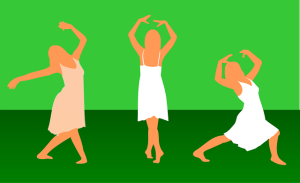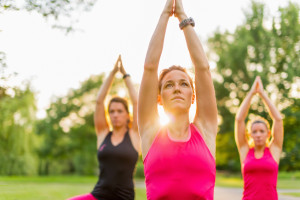- Calls to this hotline are currently being directed to Within Health or Eating Disorder Solutions
- Representatives are standing by 24/7 to help answer your questions
- All calls are confidential and HIPAA compliant
- There is no obligation or cost to call
- Eating Disorder Hope does not receive any commissions or fees dependent upon which provider you select
- Additional treatment providers are located on our directory or samhsa.gov
Benefits of Expressive Therapies in Improving Body Image
Contributor: Rachel Sherron, MA, LPC, RYT, Coordinator of Trauma Awareness and Yoga Specialist and Lisaura Lozada-Goode, MA, LCPC, BC-DMT, Expressive Therapy Program Coordinator

It could be somewhat benign as in a general dislike of hips and thighs, or hatred so extreme that the person actively mutilates her own body.
What we find is that by the time one of these individuals enters treatment, she is ready for change. She has hated or abused her body for an extended period of time and finally realized that what she is doing is not working. Establishing a shift from body loathing to body loving is a process.
One-on-One Verbal Psychotherapy
Verbal psychotherapy is a key aspect of this process. In a one-on-one interaction, a woman can describe her history, explain situations and events, and convey thoughts and feelings. But at a certain point, words can actually get in the way of progress. This is because words keep a woman stuck in her head, instead of allowing her to connect with her emotions on a body level.
This is exactly why expressive therapies, such as yoga and dance movement therapy, are so critical in the creation of a positive body image.
Yoga Therapy

Connecting People to a Certain State of Mind
Yoga is a practice of physical postures, breathing exercises, and meditations; the entire goal is to connect people to a certain state of mind or oneness. This union is usually a oneness of mind and body.
It helps women live in their bodies rather than view their bodies as an object. Because many women with psychiatric issues dissociate from their bodies, objectification, or viewing their bodies as a commodity, comes easily.
Increasing Interoception
Yoga works to improve body image because it increases interoception which is the mind’s ability to receive and assess sensations in the body. It is within the body that the connection to the spirit or true Self exists; without the ability to feel the body, one’s ability to connect to deeper aspects of themselves is diminished.
It is upon the (sometimes momentary) connection to true Self, that a person realizes that the body is an important and vital container that provides the ability to connect to something much larger. The obsession over how the body looks, which happens purely from cognition, begins to fade away.
Opening Up Awareness in the Subtleties of Sensations
When an individual moves her body in yoga, she starts to feel her mobility opening up awareness of the subtleties of her sensations and she gets to feel her body as her home. When she realizes its amazing strengths and capabilities, she can experience gratitude and acceptance.
Dance Movement Therapy

In other words, DMT is the use of movement in a therapeutic fashion to improve the mental and physical well-being of a person. It is based in the belief that the body, mind and spirit are interconnected.
DMT is a relational therapy in which the relationship to self and others is constantly explored.
Studies in the Field of DMT
Many research studies in the field of DMT indicate that there are numerous benefits for someone engaging in this type of psychotherapeutic modality. For someone struggling with body image issues, benefits include the following:
Changes in movement patterns can result in alterations in internal perceptions/thinking patterns, such as body image or feelings about self
- DMT encourages symbolization and the use of healthy curiosity through the creative process which increases abstract thinking and both mental/emotional flexibility
- Increases adaptability, stability and healthy ability to adjust to the world/environment through expanding movement repertoire/vocabulary
- Increases awareness of internal sensations
- Helps the individual in the identification and positive expression of feelings related to body image struggles
- Increases trust in one’s body
- Encourages self-expression without judgment
- Helps the individual get in touch with playfulness
- Helps the person practice being in the present moment, being with and experience self in a positive way
Achieving Recovery

Through expressive therapies such as yoga and dance movement therapy, residents begin to respect, appreciate, even love their bodies.
Community Discussion – Share your thoughts here!
What positive experiences have you had with yoga therapy and dance movement therapy within your eating disorder treatment?
References:
- www.adta.org
Last Updated & Reviewed By: Jacquelyn Ekern, MS, LPC on July 1st, 2015
Published on EatingDisorderHope.com
